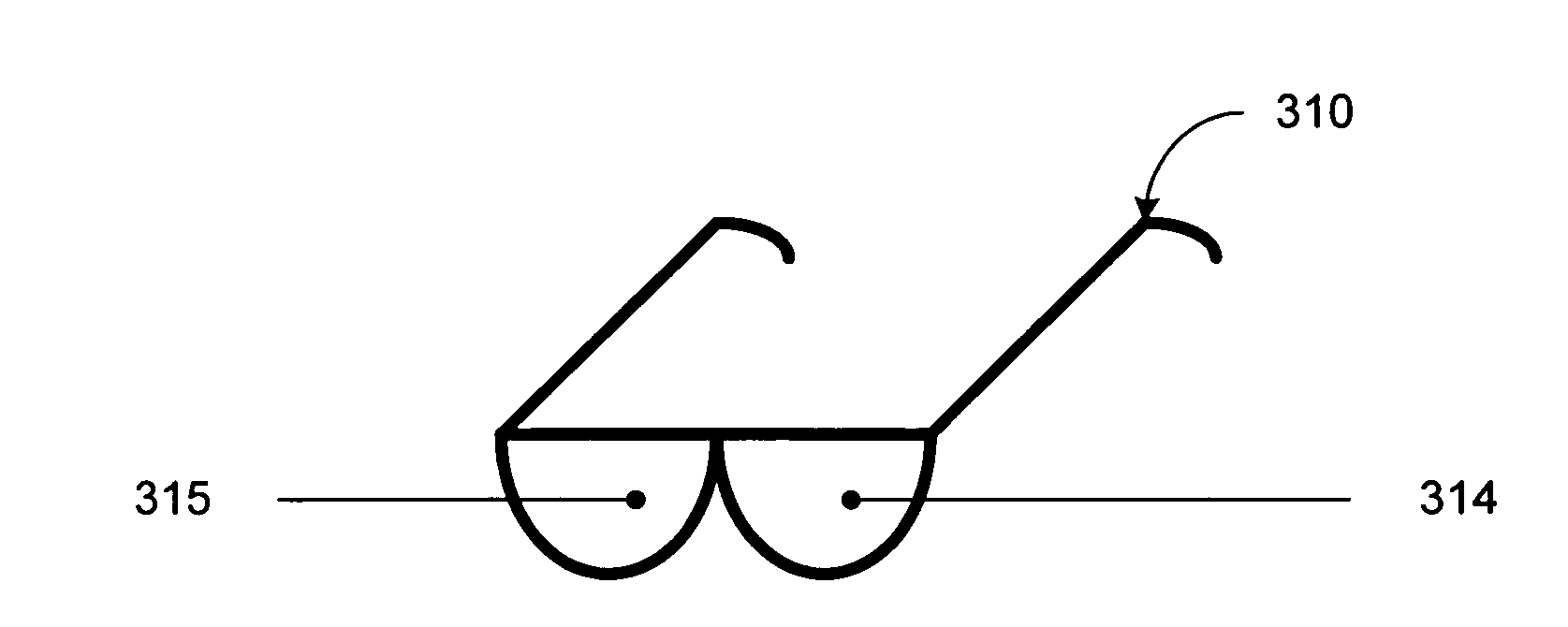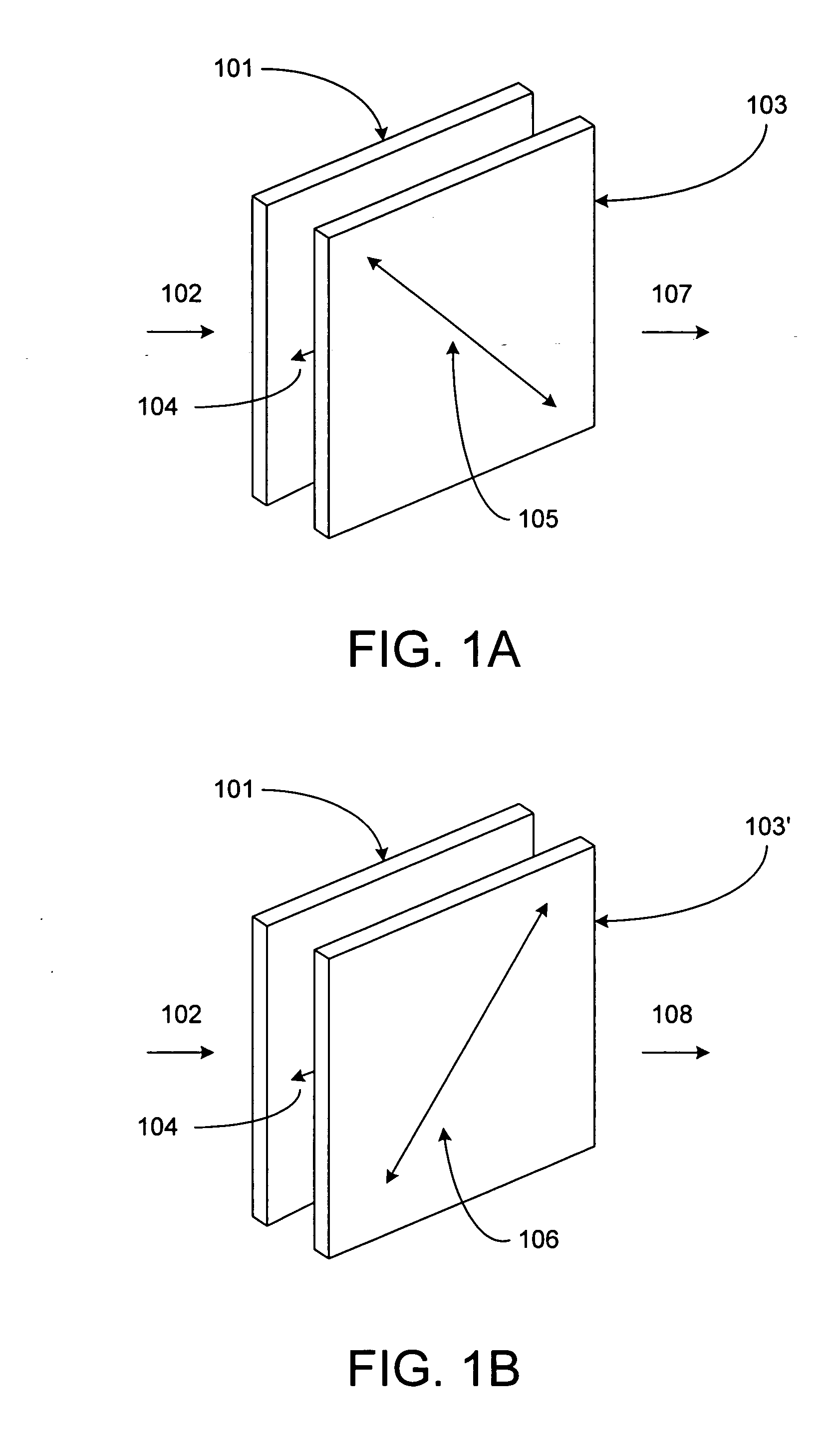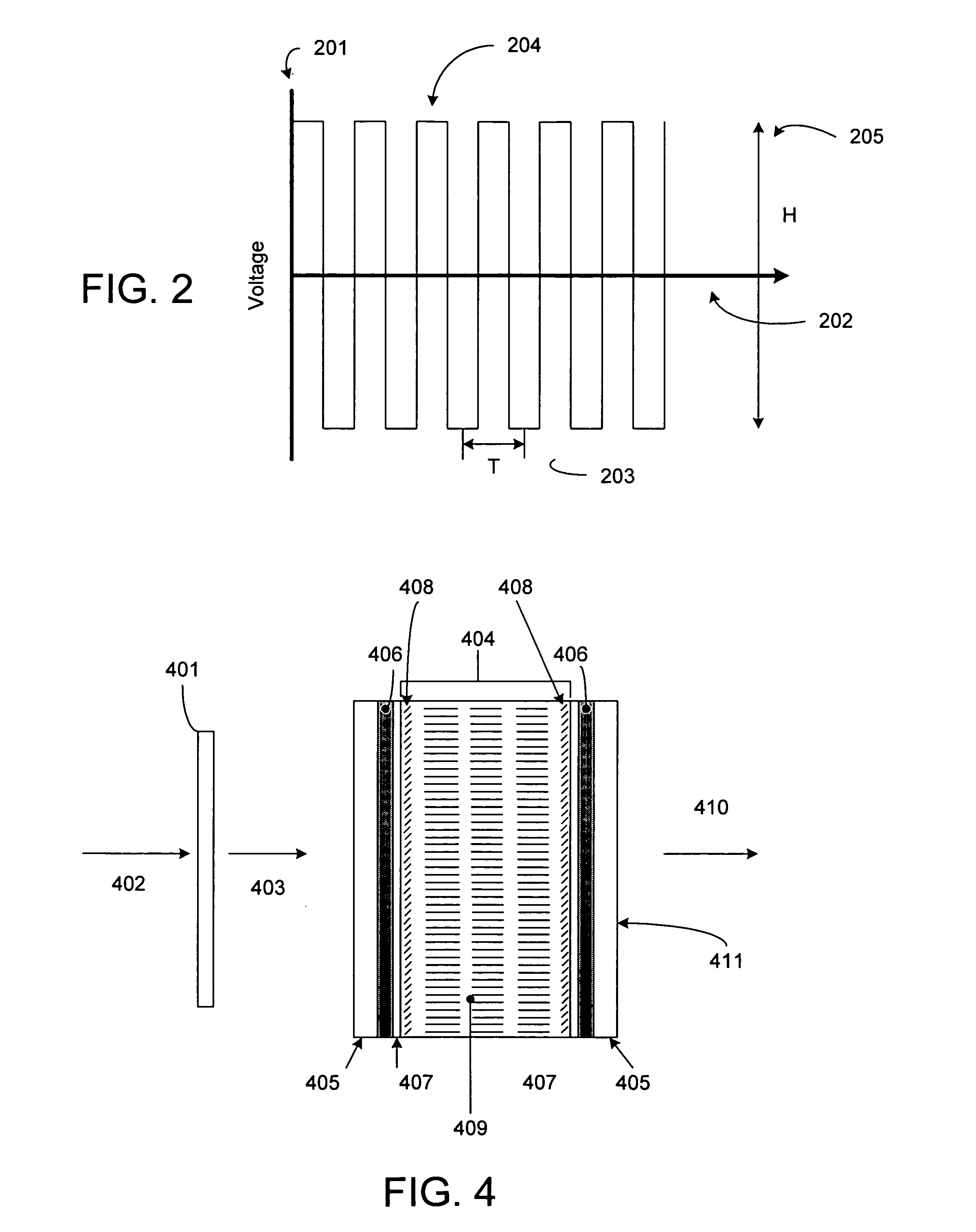Steady state surface mode device for stereoscopic projection
a surface mode and projection technology, applied in the field of motion picture projection, can solve the problems of reducing the amount of light that can be projected on the screen using this technique, affecting the quality of the image,
- Summary
- Abstract
- Description
- Claims
- Application Information
AI Technical Summary
Benefits of technology
Problems solved by technology
Method used
Image
Examples
Embodiment Construction
[0024] The present design uses a surface mode device (SMD) where circular polarized light is created through the use of a sheet polarizer in combination with the SMD. This electro-optical modulator is operated in a steady state mode that enables tuning the device to the exact wavelength of the analyzers in the selection device eyewear to optimize image selection and reduce crosstalk. In addition, tuning may be required to correct for any phase shifting resulting from the birefringence produced by projection screen binder materials.
[0025] The SMD is also known in the literature as the pi-cell. The SMD is referred to here as an SMD or a modulator, or an electro-optical modulator, or any combination thereof.
[0026] As noted, due to certain projection brightness constraints, screen size has previously been limited. One solution to the screen size limitation is to use two projectors, thereby doubling the light output and that is the approach taken in this disclosure. The present design ...
PUM
 Login to View More
Login to View More Abstract
Description
Claims
Application Information
 Login to View More
Login to View More - R&D
- Intellectual Property
- Life Sciences
- Materials
- Tech Scout
- Unparalleled Data Quality
- Higher Quality Content
- 60% Fewer Hallucinations
Browse by: Latest US Patents, China's latest patents, Technical Efficacy Thesaurus, Application Domain, Technology Topic, Popular Technical Reports.
© 2025 PatSnap. All rights reserved.Legal|Privacy policy|Modern Slavery Act Transparency Statement|Sitemap|About US| Contact US: help@patsnap.com



